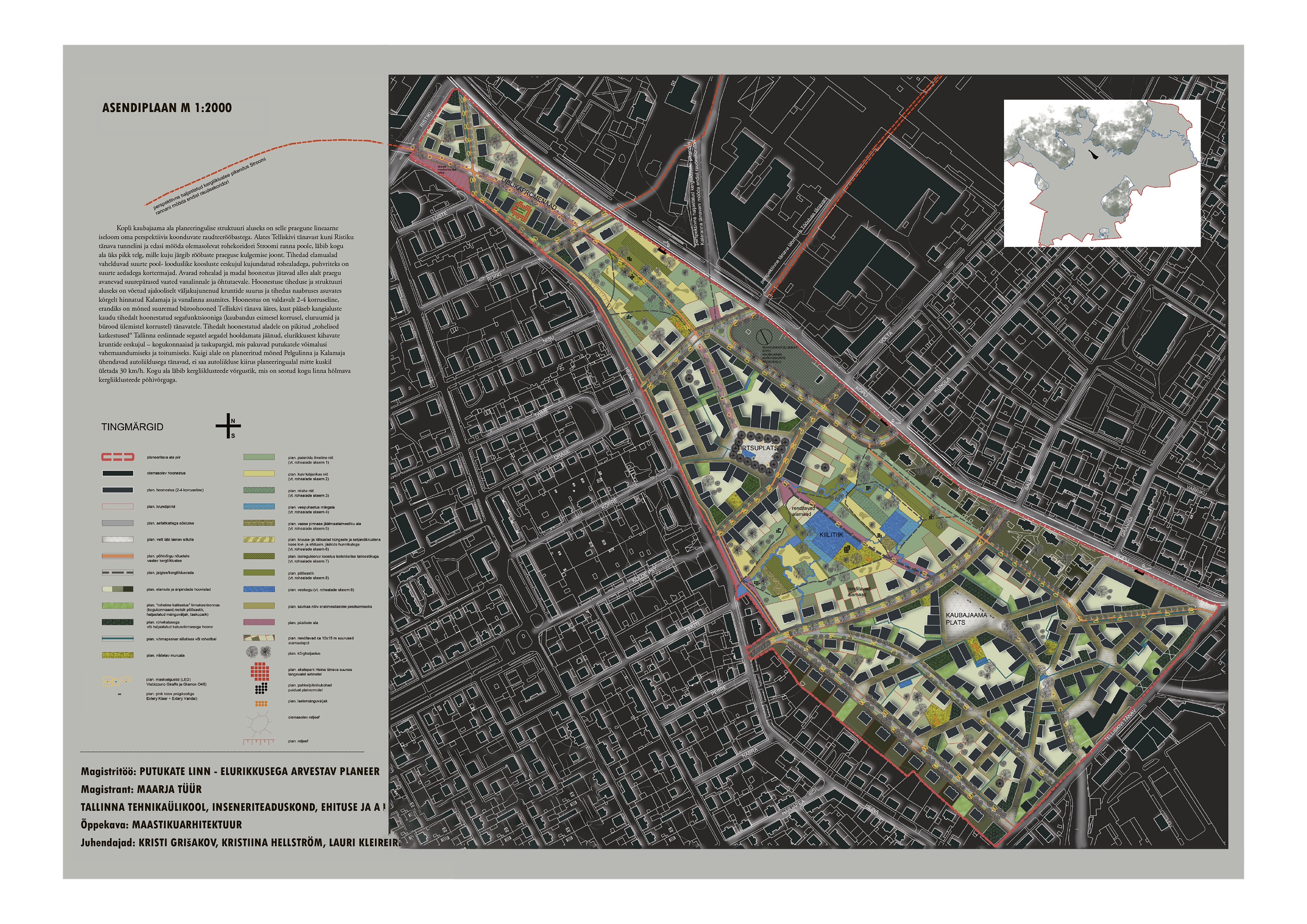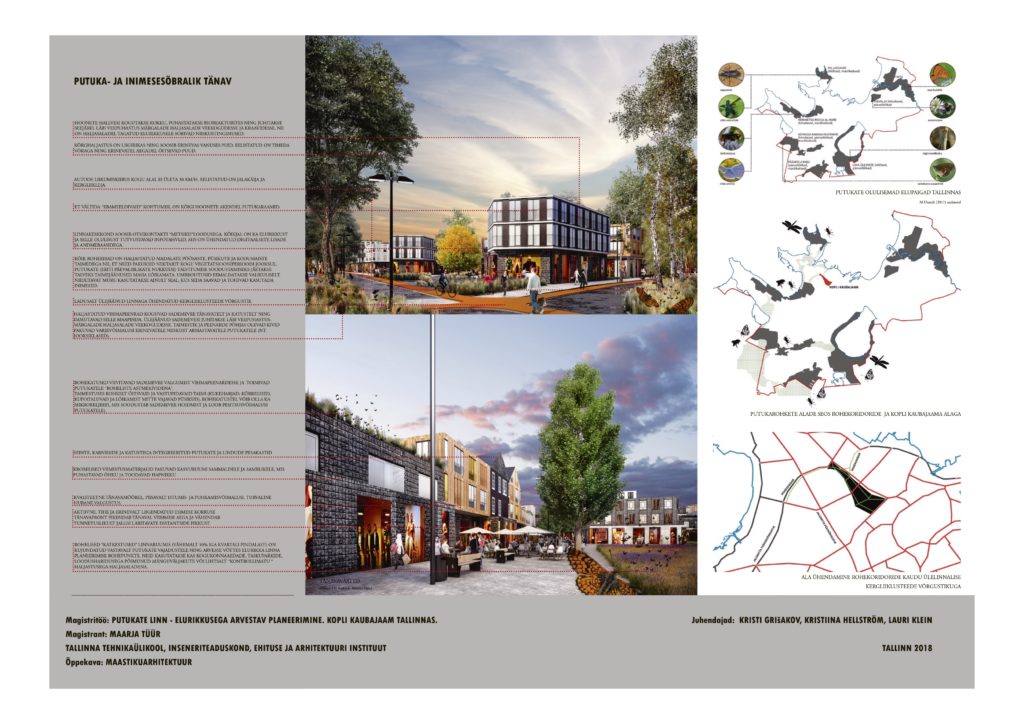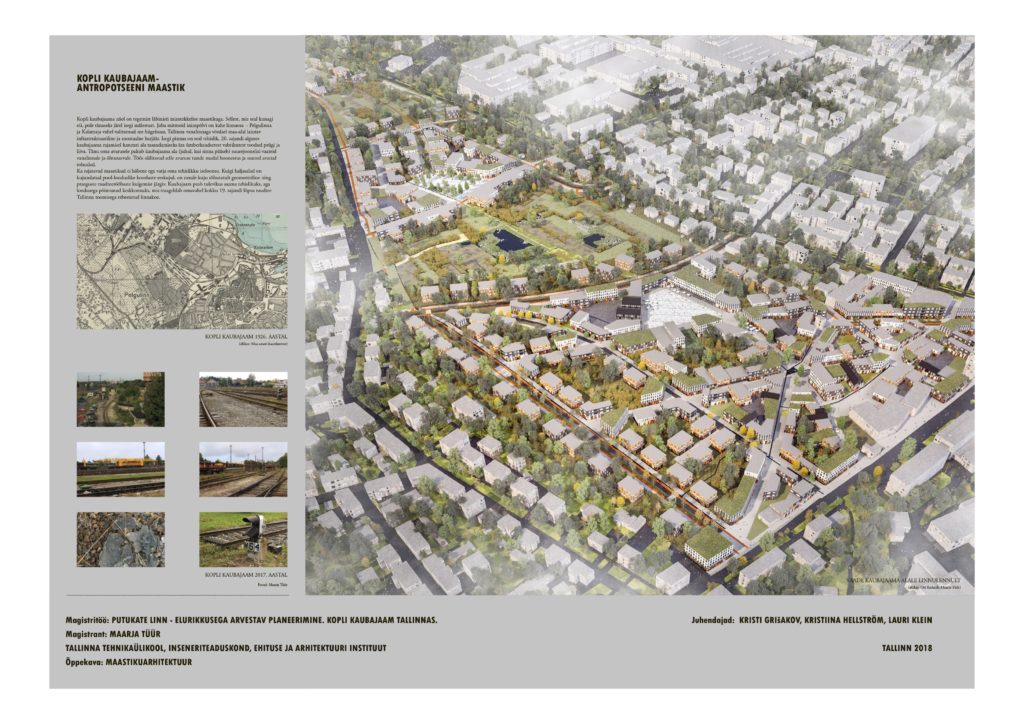Maarja Tüür’s Master’s thesis “City of Bugs – Planning with Biodiversity” brings together data supporting planning that takes into consideration biodiversity and shows us how to implement them in the landscape architectural planning vision of a specific area – Kopli freight terminal. The given work examines the hypothesis that biodiversity may be increased in an urban area without compromising a dense pedestrian-friendly environment also for people.
From the perspective of biodiversity, she focusses on an important class in nature – insects. The aim was to provide a solution by means of planning and landscape architecture that would correspond to the requirements of various species (including insects and people) on the living environment, in other words, to achieve planning that takes into consideration biodiversity in a highly populated urban environment.
The present landscape architectural planning vision of Kopli freight terminal area is primarily an experiment: what will happen if we abandon the present anthropocentric preference in creating a living environment for people and consider the priorities of other species instead. The given activity is like balancing on the razor’s edge between the needs of people and other species. Then again, we may say that the benefits that people must give up for other species (in this case the insects) does not generally pose any harm to people’s life or well-being, quite the contrary – lower buildings, fewer cars in the streets, scrapping synthetic plant protection products, fewer trimmed lawns and more plants in bloom will also improve people’s living environment.
Kristi Grišakov


















































































































































































































